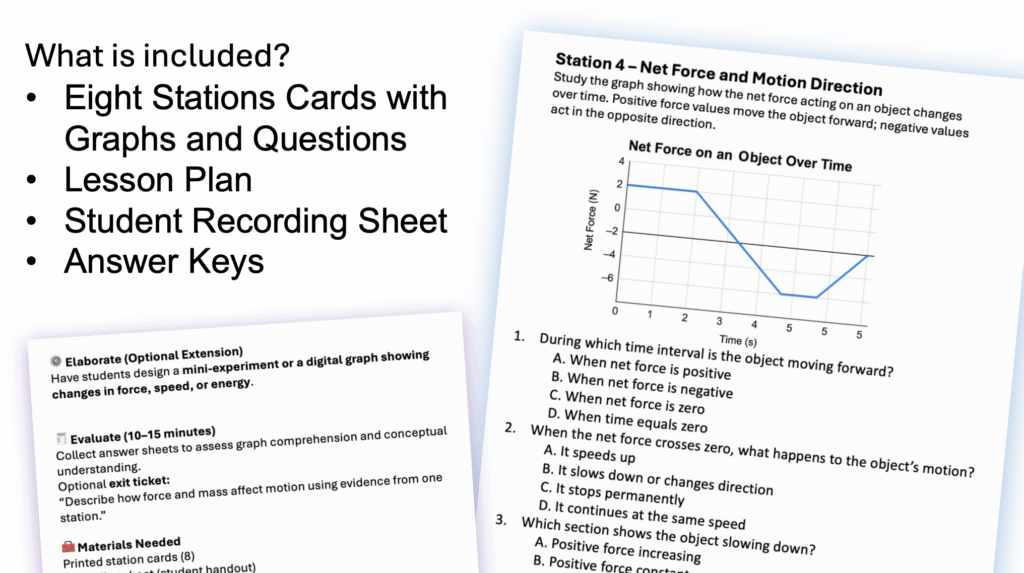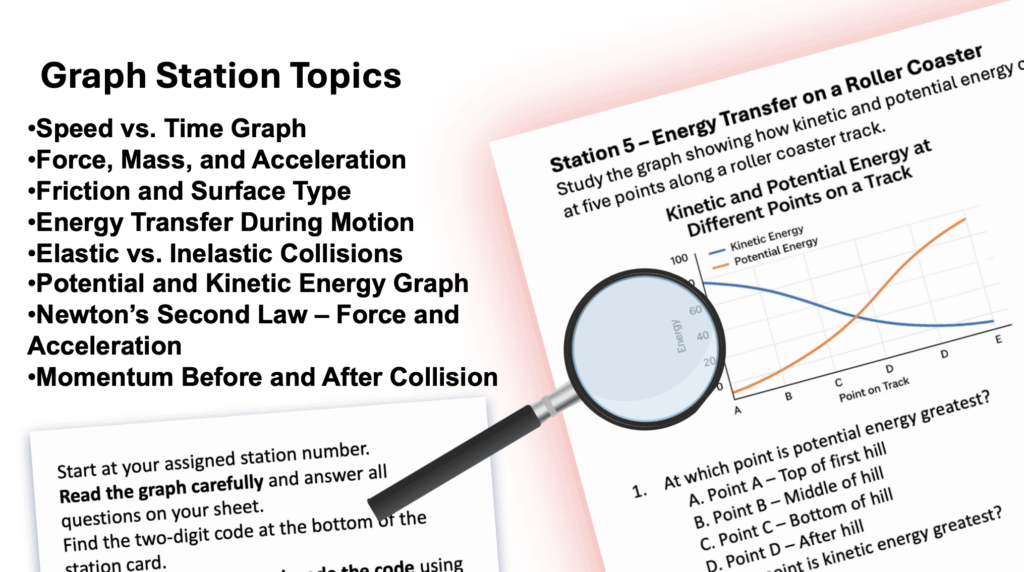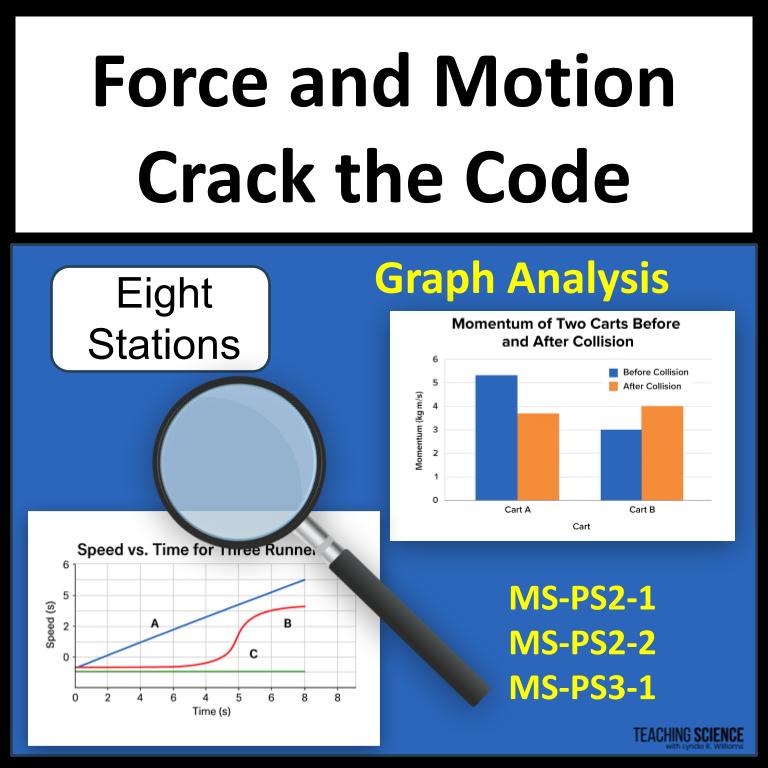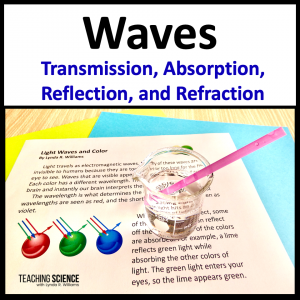Description
Explore force, motion, and momentum with this engaging crack-the-code activity and scavenger hunt! Students analyze 8 force and motion graphs, answer questions, and decode a secret word while reviewing Newton’s Laws, friction, energy transfer, and acceleration.
Bring energy and excitement to your physics lessons with this Force and Motion Code-Breaker Science Stations & Graph Analysis Activity!
Students rotate through eight interactive graph stations that challenge them to interpret data, apply Newton’s Laws, and uncover a secret science word.
Each station blends graph reading, critical thinking, and problem-solving, helping students connect concepts such as force, mass, acceleration, friction, energy, and momentum in meaningful ways.
Graph Topics:
•Speed vs. Time Graph
•Force, Mass, and Acceleration
•Friction and Surface Type
•Energy Transfer During Motion
•Elastic vs. Inelastic Collisions
•Potential and Kinetic Energy Graph
•Newton’s Second Law – Force and Acceleration
•Momentum Before and After Collision
What’s Included
✅ 8 Force & Motion Graph Stations (printable cards)
✅ Polybius Square Code Chart
✅ Student Recording Sheet
✅ Teacher Answer Key
✅ Lesson Plan
This activity takes about 40 minutes to go through all the stations.
🎯 Concepts Covered
- Newton’s Second Law (Force, Mass, Acceleration)
- Friction and Surface Types
- Kinetic and Potential Energy Transfer
- Conservation of Momentum
- Net Force and Direction
- Acceleration and Speed Graphs
🧩 How It Works
Students visit each station and analyze a graph.
They answer questions and record the code number.
Using the Polybius Square, they decode each letter.
When all the letters are revealed, they discover the secret word.
MS-PS2-1 – Motion and Stability: Forces and Interactions
Apply Newton’s Third Law to design a solution to a problem involving the motion of two colliding objects.
MS-PS2-2 – Motion and Stability: Forces and Interactions
Plan an investigation to provide evidence that the change in an object’s motion depends on the sum of the forces on the object and the mass of the object.
MS-PS3-1 – Energy: Definitions of Energy
Construct and interpret graphical displays of data to describe the relationships of kinetic energy to the mass of an object and to the speed of an object.
Perfect for grades 6–8, review days, or sub plans, this activity builds science literacy, collaboration, and data-analysis skills — all while keeping students actively engaged.











